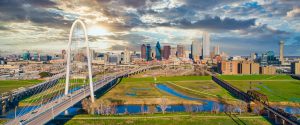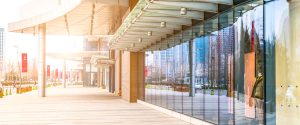5 Reasons to Invest in Phoenix
The Valley of the Sun continues to gain investor attention because of in-migration trends, a booming local economy, and strong buyer competition. Phoenix is attracting many out-of-state investors looking to diversify and expand their portfolios. The metro is booming in industrial sales, in-migration rates, and retail development.
Fast-Growing Job Market
Arizona is projected to create more than 700,000 jobs over the next decade. In the past year, Phoenix has added roughly 90,000 new hires, proving to be among the strongest metropolitan markets for hiring, according to the Arizona Office of Economic Opportunity. The metro attracts hundreds of thousands of vacationers annually, creating a dire need for workers in the leisure and hospitality sectors. Additionally, Phoenix is a developing technology hub, ranking as the best city for software companies to plant capital. Large companies, such as DoorDash, Amazon, and UnitedHealth Group, migrated their headquarters to Phoenix, opening a multitude of job opportunities. Amazon announced its plans to create more than 550 corporate and tech jobs in Tempe since its location opening in early 2021. As a state, Arizona is projected to see 1.6 percent annual job growth until 2029, outpacing the rest of the country, which is projected to see 0.4 percent in annual growth, according to the Phoenix Business Journal.
Booming Industrial Sector
Phoenix has seen a booming industrial market, recording its best performance in the last two years. 2022 will see even higher record-breaking numbers, as Phoenix is expected to expand the industrial inventory by 10.2 percent across the market. The tax-friendly metro attributes a large amount of its industrial business to California-based investors, boosting the sector’s buying pool and increasing prices. Driving industrial industries include data centers, manufacturing facilities, and construction. As reported in the Q1 2022 Phoenix Industrial Report, there are 392,869,054 square feet of rentable building area in Phoenix with a 4.7 percent vacancy rate. The metro’s strongest industrial submarkets are in the Southwest Valley, including Tolleson, Glendale, and Goodyear.
High In-Migration
In the last four decades, roughly 62 percent of Phoenix’s population has been attributed to out-of-state or out-of-country individuals. As a result of the metro’s weather, retirement appeal, and tax-friendly properties, many out-of-state investors look to Phoenix to build and invest capital. In 2021, Phoenix was ranked as the top metropolitan area for net migration, earning this title for three consecutive years, according to the U.S. Census Bureau. The arrival of new residents in the metro averages about 244 people per day, benefiting the housing, retail, and office markets. As a result of the pandemic, people are looking to leave expensive, highly populated coastal cities and migrate to more cost-effective markets with room to grow.
Record Numbers in Multifamily
Demand, rent, and supply have contributed to Phoenix’s extraordinary multifamily market. Work-from-home arrangements and in-migration have increased demand for housing to unprecedented levels. The outlook for vacancy is favorable, as the metro has seen a healthy balance between supply and demand over the past five years, keeping vacancies in the mid-6 percent to low-7 percent range. The renter pool appreciated rapidly because of low single-family inventory, which has increased rent prices in the metro. Rents in Phoenix are up 11.4 percent in its prominent cities such as Downtown Phoenix and Old Town Scottsdale. However, rent in suburban areas is back to January 2020 levels. In 2022, the market’s inventory is expected to expand by about 8.7 percent to meet heavy demand. An increase in build-to-rent communities has contributed to a large amount of Phoenix’s 2021 multifamily sales. The opportunities in this metro are endless as people continue to relocate to Phoenix because of its weather, job opportunities, and economic living conditions.
Innovative Retail Development
The Valley of the Sun has appealed to many new investors looking for quality assets. Year-over-year rent growth is at six percent, and a large sum of retail tenants have been opening shops within the past 18 months. The metro’s demand lies in grocery, pharmacy, home improvement, drive-thru, and hobby stores. In early 2022, an Arizona developer announced the development of one of the first open-air shopping malls in the Western U.S. to be built in Phoenix. The property will scale 700,000 square feet off Loop 303 and Waddell Road, anticipated by next fall. According to the Q1 2022 retail report, there are currently 129 properties and 30,250 units under construction in Phoenix’s retail sector.









